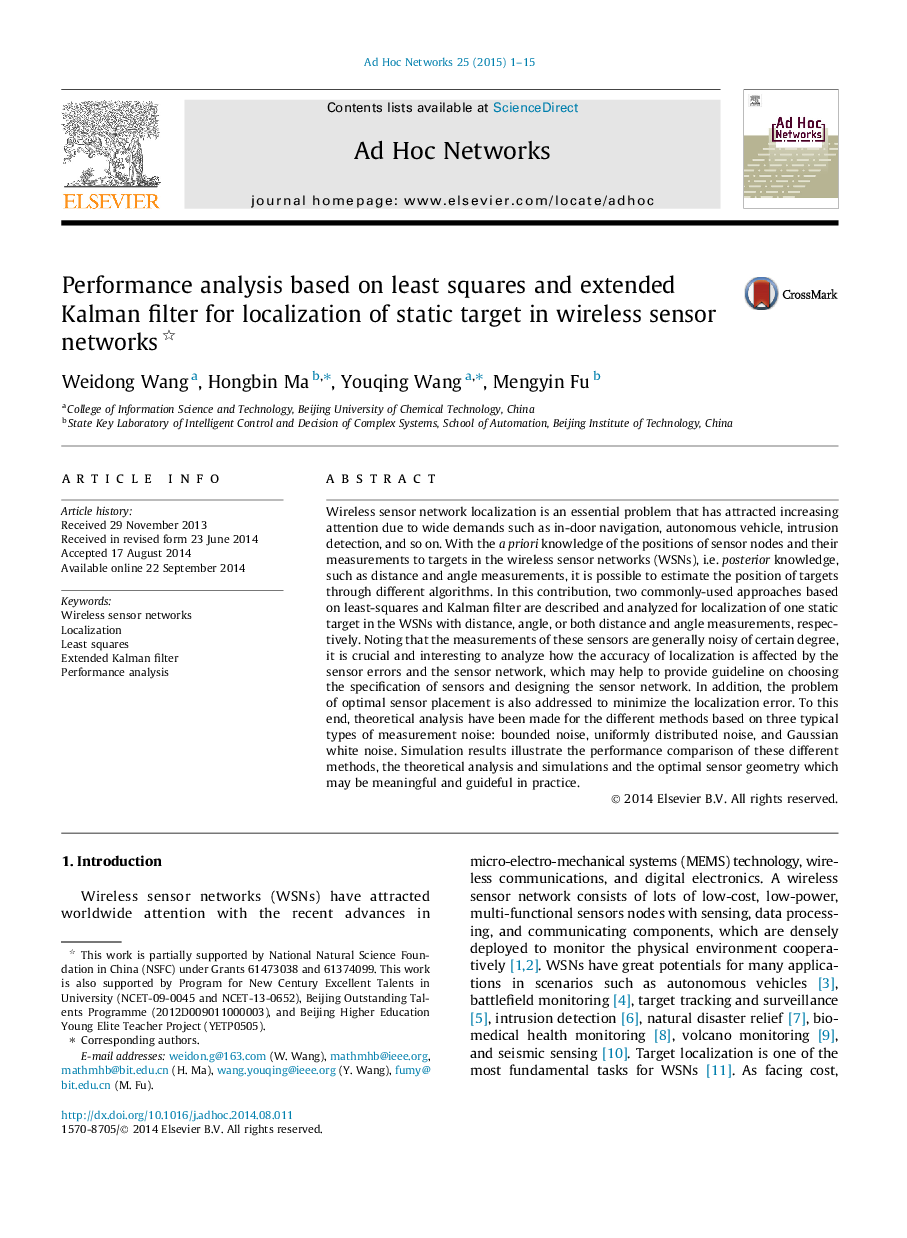| Article ID | Journal | Published Year | Pages | File Type |
|---|---|---|---|---|
| 445388 | Ad Hoc Networks | 2015 | 15 Pages |
Wireless sensor network localization is an essential problem that has attracted increasing attention due to wide demands such as in-door navigation, autonomous vehicle, intrusion detection, and so on. With the a priori knowledge of the positions of sensor nodes and their measurements to targets in the wireless sensor networks (WSNs), i.e. posterior knowledge, such as distance and angle measurements, it is possible to estimate the position of targets through different algorithms. In this contribution, two commonly-used approaches based on least-squares and Kalman filter are described and analyzed for localization of one static target in the WSNs with distance, angle, or both distance and angle measurements, respectively. Noting that the measurements of these sensors are generally noisy of certain degree, it is crucial and interesting to analyze how the accuracy of localization is affected by the sensor errors and the sensor network, which may help to provide guideline on choosing the specification of sensors and designing the sensor network. In addition, the problem of optimal sensor placement is also addressed to minimize the localization error. To this end, theoretical analysis have been made for the different methods based on three typical types of measurement noise: bounded noise, uniformly distributed noise, and Gaussian white noise. Simulation results illustrate the performance comparison of these different methods, the theoretical analysis and simulations and the optimal sensor geometry which may be meaningful and guideful in practice.
